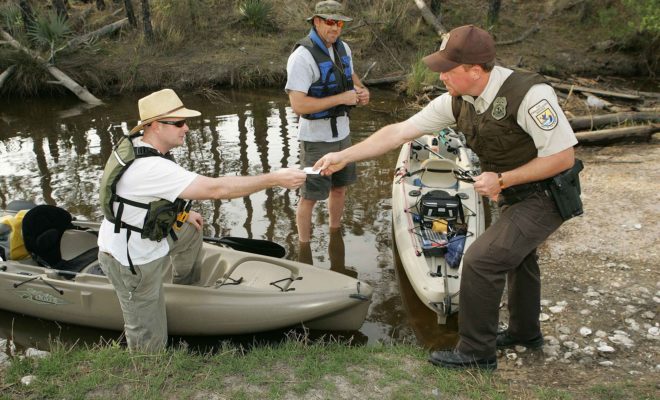How Will Changes in Habitat Affect Fish in and Near the Chesapeake Bay?
Posted
Last Updated
NOAA-funded research has explored how different species, including the commercially important summer flounder and black sea bass, may change their habitat use due to climate change.
In the Mid-Atlantic Bight—the coastal and estuarine waters from Cape Cod, Massachusetts, to Cape Hatteras, North Carolina—water temperature is increasing at twice the global rate. In the Chesapeake Bay, we are seeing shifts in where some fish species spend time due to climate change. The timing of when some species migrate in and out of the Bay has also been changing.
 Habitats including marsh are being affected by climate change. Recent research has explored how changes in habitat can affect commercially and recreationally important fish species in the Chesapeake Bay. Photo: Chesapeake Bay National Estuarine Research Reserve—Virginia
Habitats including marsh are being affected by climate change. Recent research has explored how changes in habitat can affect commercially and recreationally important fish species in the Chesapeake Bay. Photo: Chesapeake Bay National Estuarine Research Reserve—Virginia
Changes in which species spend time in the Bay—and when—can affect how the entire food web works. So we need to understand what will happen not to just one species, but to the entire Chesapeake ecosystem. To learn more, the NOAA Chesapeake Bay Office funded research to help scientists explore these topics.
More Structured Habitat, More Summer Flounder and Black Sea Bass?
Researchers at the Virginia Institute of Marine Science wanted to learn more about how different habitats support juvenile summer flounder and black sea bass. Scientists wondered whether the amount of nursery habitat available in the Chesapeake Bay, as well as in oceanside lagoons on Virginia’s Eastern Shore, might affect how many juvenile fish there were in the Chesapeake Bay.
The scientists conducted field research in Virginia’s Piankatank River, which flows into the Chesapeake Bay, and in South Bay, a lagoon on Virginia’s Eastern Shore. They collected data on fish in seagrass areas, oyster reefs (or on-bottom oyster aquaculture), intertidal marshes, and unstructured soft bottom areas in both locations. They then compared the data from the Piankatank River to data from South Bay.
The South Bay location had more areas of structured habitats, especially seagrass. It was also closer to the open ocean, and had slightly saltier water. It also had more fish. Notably, South Bay had about 10 times more juvenile black sea bass than did the Piankatank.
In both locations, there were more juvenile fish in the marsh areas than in the other areas. This finding highlights the importance of marsh habitats as a nursery area for many species of fish. The Chesapeake Bay region has lost a lot of marsh area due to sea level rise. In some areas, marshes have “retreated” upland to compensate for those losses. But rates of sea level rise are accelerating. Unless marshes can migrate at a rate that keeps pace with rising seas, there will be less marsh area. And we don’t know whether newly formed marshes provide the same quality of habitat as do well-established marshes.
Researchers also noted that temperatures above 78.6°F hindered the growth of juvenile summer flounder. The area of the Chesapeake where bottom temperatures were less than 78.6°F has declined around 50 percent since 1996. Temperatures were most likely to become too hot for juvenile summer flounder in August. Summer flounder generally leave the Bay in late summer. But high temperatures in August could convince summer flounder to leave the Bay earlier than they traditionally have. This could explain declining catches of juvenile summer flounder observed in September, October, and November in recent years.
Read more by fisheries.noaa.gov




